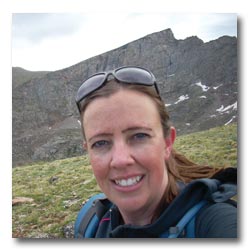
This week’s January snowstorm packed a punch and cancelled classes at Colorado State University. Beyond the excitement of a snow day, the storm was a welcome sight for much-needed water supplies that start as snowpack in the mountains. Let’s hope that trend continues.
Becky Bolinger, assistant state climatologist and a drought specialist at CSU, contextualized what this storm did for anticipated snowpack this year, and how this January has compared to previous ones on record (it depends where you look).

SOURCE: What has this latest winter storm meant for snowpack for Colorado and the subsequent drought outlook?
Bolinger: Thanks to an active storm pattern throughout December and January, our statewide snowpack is currently (as of Jan. 18) at 134% of average. With the latest storm numbers still coming in, that number is likely to go up. Statewide, it is very likely that peak snowpack, which usually occurs in early April, will be near or above average. This is great news. Because of this consistent storm activity, we have seen improvements in drought conditions over our Colorado mountains for the past two months.

This latest storm has been very beneficial, particularly for our northern Front Range communities and northeast Colorado. It’s likely we will see improvement in the drought depiction for parts of northeast Colorado over the next week.
Unfortunately, southeast Colorado has been missing out on a lot of events lately, and this latest storm was no exception. Snowpack for the Arkansas basin is currently at 84% of average. It is the only basin below average at this time. The lower elevations of southeast Colorado have seen developing drought conditions over the past few months, with very dry conditions dominating.
SOURCE: Was the heaviness/wetness of the snow that we got anything to write home about?
Bolinger: While some snow totals may be less than some anticipated, this was still a great accumulating event. And the snow was a lot wetter than Coloradans might be used to. Definitely not common for January. Colorado is known for a dry and powdery snow – great for skiing on – especially during the winter months. A general rule-of-thumb meteorologists use is a 10-to-1 ratio – for every 10 inches of snow, you’ll get 1 inch of liquid. But for Colorado, especially near the middle of the snow season (December-February), that ratio tends to be higher. Getting into those warmer spring months of March and April, we expect that ratio to be a bit more representative.
SOURCE: Has this January been unusually snowy compared with previous years on record?
Bolinger: It depends on where in the state you look. For our higher elevations, January is a big time for snow. But for our lower elevations, January tends to be a lower snow total month, taking a back seat behind November, December, February and March. While this storm was hyped, many of our lower elevations haven’t had a lot of snowy days this January. In Fort Collins for example, our average snowfall from Jan. 1-17 is 3.5 inches — and before this storm, we were below average at 2.1 inches. So, this storm will bump us up above average, but it’s not anything spectacular. In northeast Colorado though, there are locations that have seen 10 inches this January so far, when their normal for the entire month is around 4 inches.
It turns out this was one of the biggest January snows for Denver in 30 years. So, while January as a whole hasn’t been incredibly snowy, this storm still stands out.